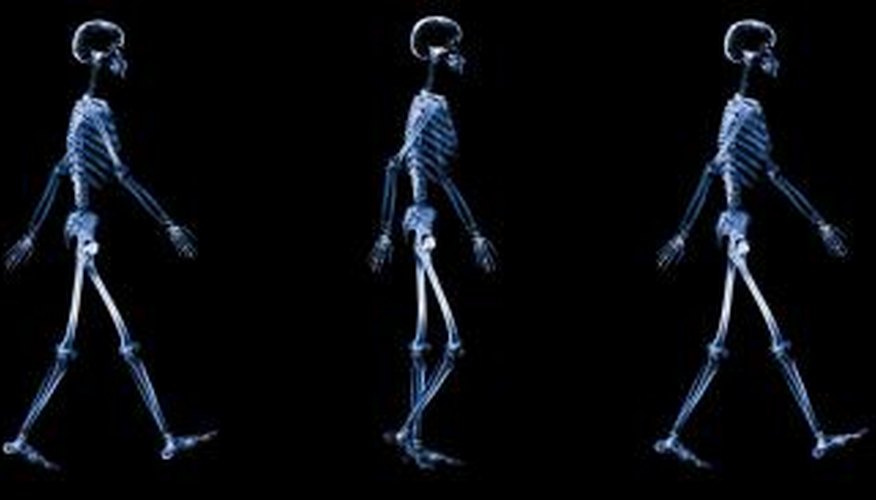A person's gait -- walking pattern -- is determined by several factors. Neurological conditions like a stroke or cerebral palsy often cause irreversible gait abnormalities. Walking patterns can also be abnormal in a healthy person. For example, many people appear to be bouncing up and down as they walk. This is caused by landing on the front of the foot rather than the heel with each step. This pattern is called "toe-walking" and can be changed by practicing several steps.
Stretch your calf muscles to improve your ability to land on your heel with each step. The calf muscles shorten with a bouncing walking pattern. Stand and face the stairs. Step onto the bottom step with the balls of both feet. Hold the rails for support and slowly lower your heels down until you feel a stretch in the back of your lower legs. Hold for 5 seconds and repeat 10 times.
- A person's gait -- walking pattern -- is determined by several factors.
- Hold the rails for support and slowly lower your heels down until you feel a stretch in the back of your lower legs.
Practice walking while landing deliberately on the heel of both feet with each step. Unroll a long section of butcher paper on a firm floor. Pour some powder into the baking tray and step into it with both feet. Walk along the paper, then look at your footprints. You will see a full footprint if you are properly landing on your heels as you walk.
- Practice walking while landing deliberately on the heel of both feet with each step.
Wear flat-soled shoes made of stiff material like leather. For added support, wear shoes that end above the ankle. This will encourage heel strike and make it physically difficult to toe-walk. Avoid wearing high-heeled shoes -- they keep the calf muscles in a shortened position and cause tightness -- which can contribute to a bouncing walking pattern.
